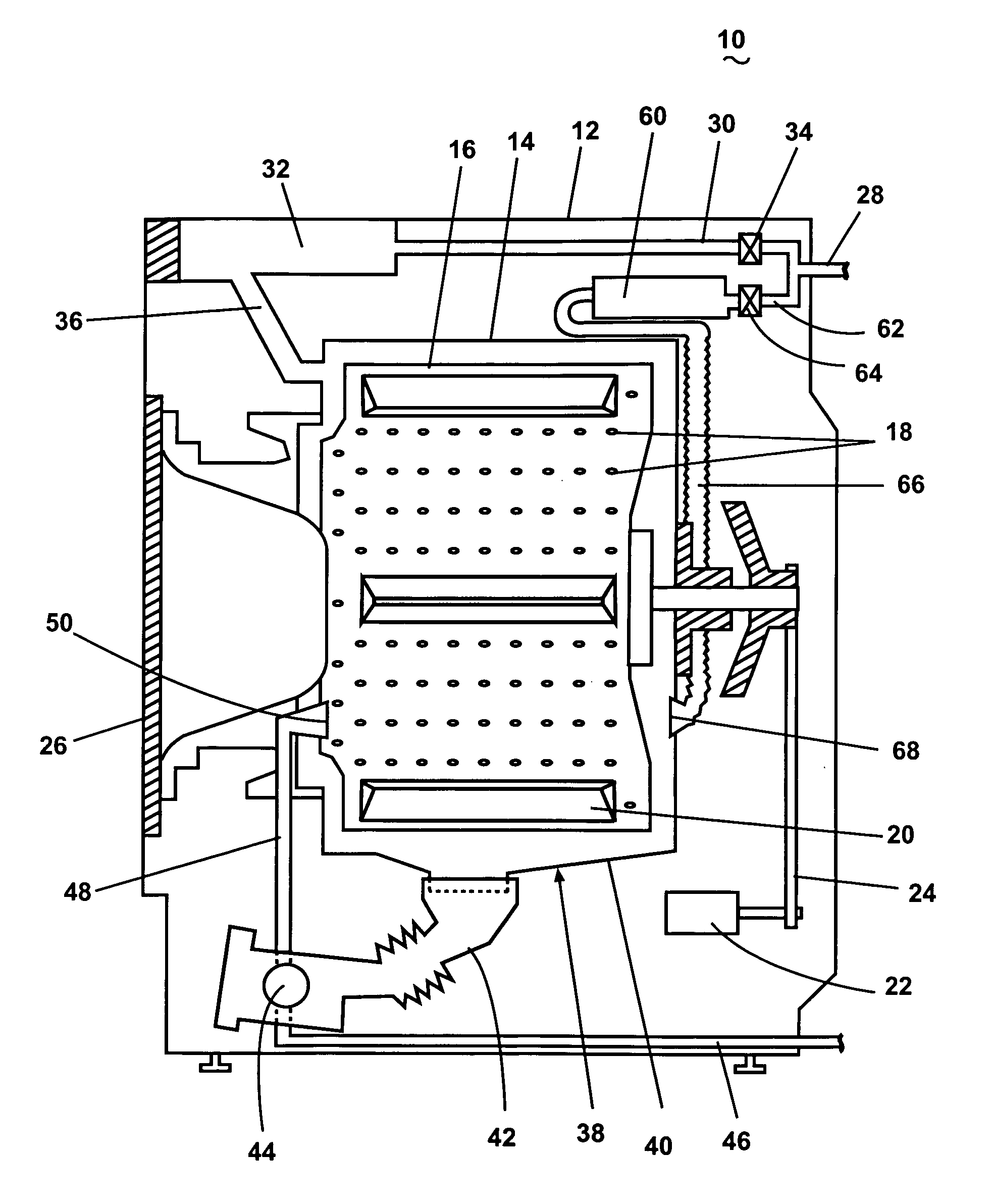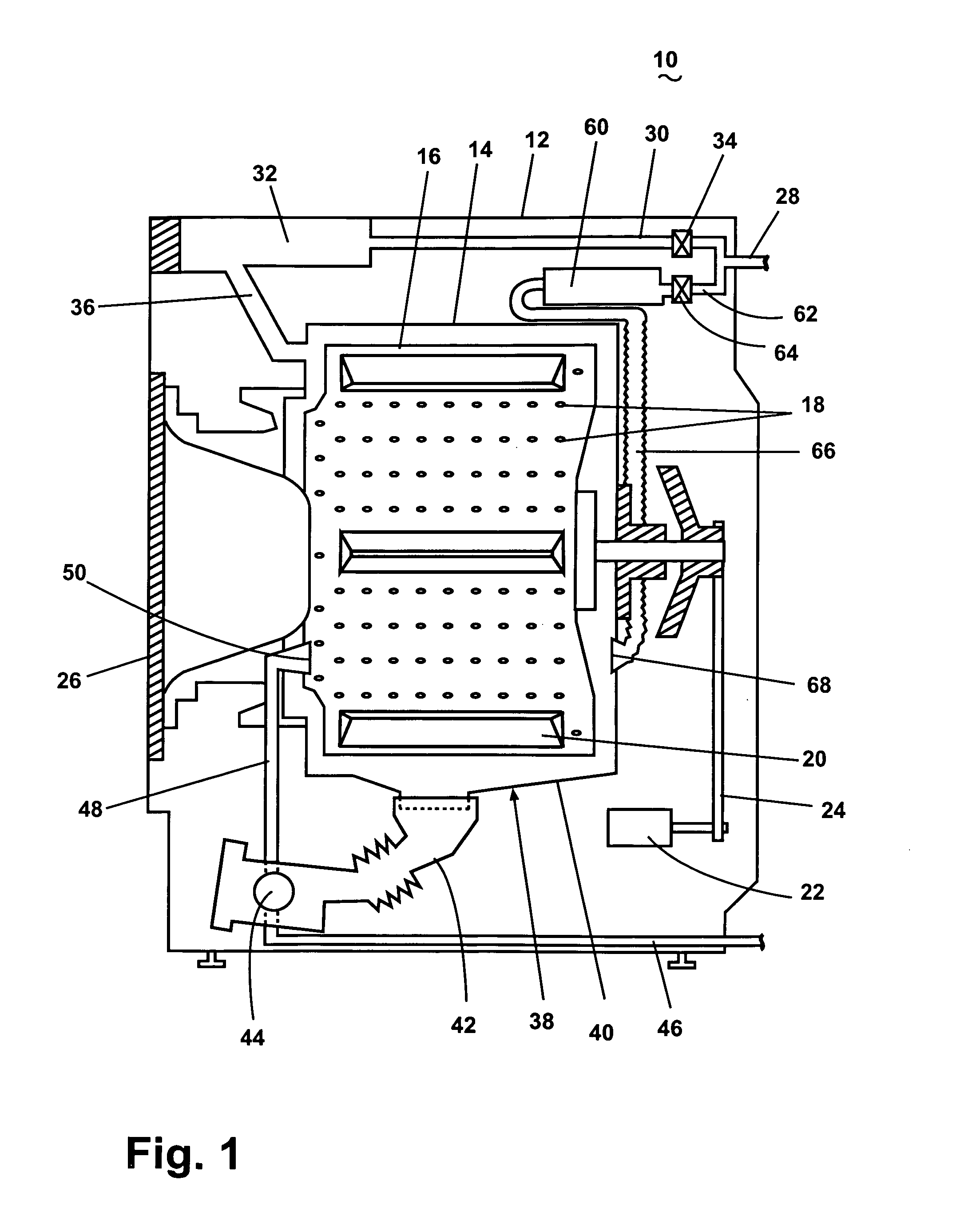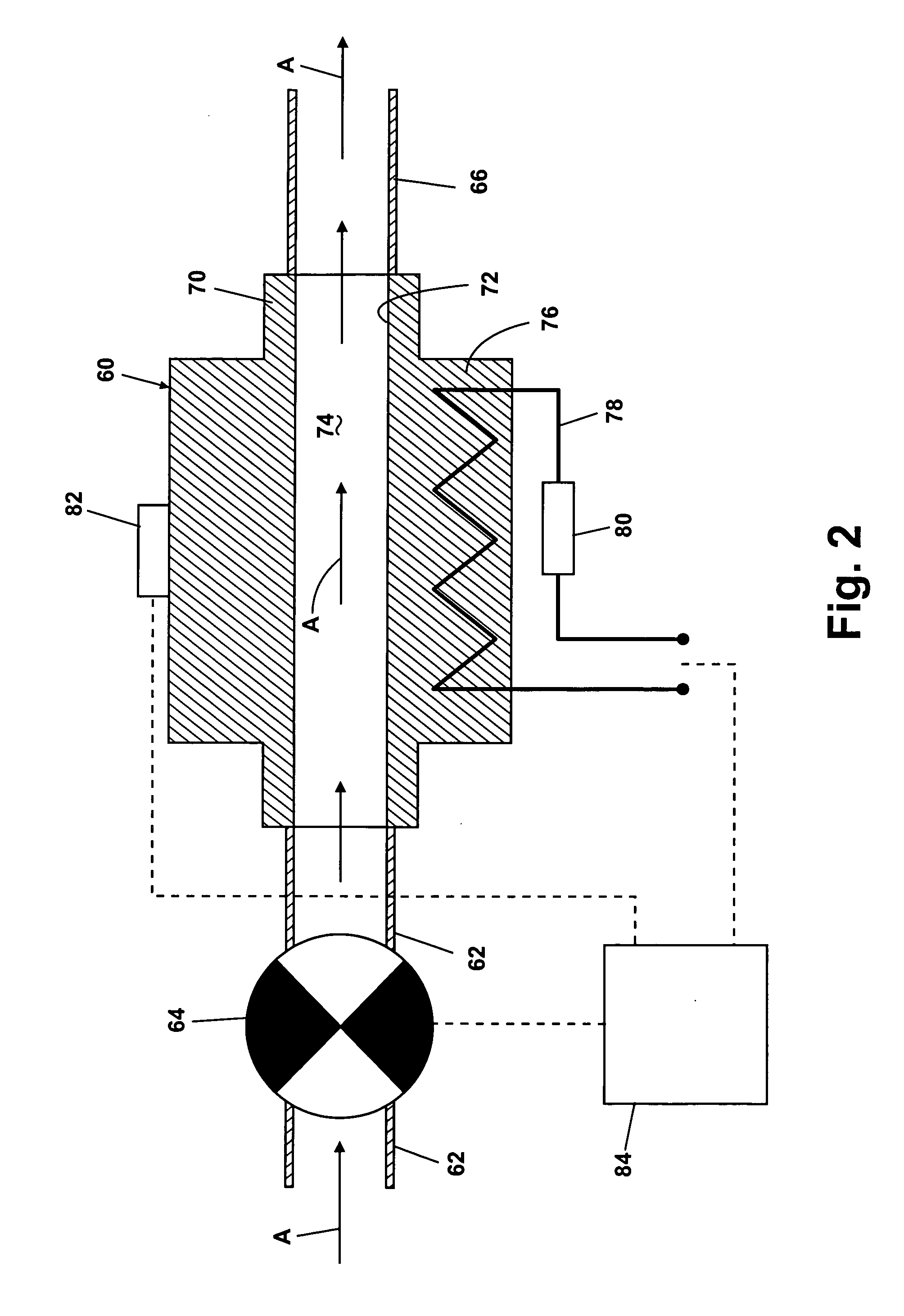Draining liquid from a steam generator of a fabric treatment appliance
a fabric treatment and steam generator technology, applied in the direction of cleaning using liquids, textiles and papermaking machines, other washing machines, etc., can solve the problems of detrimental to heat transfer and fluid flow, and scale and sludge formation in the steam generation chamber
- Summary
- Abstract
- Description
- Claims
- Application Information
AI Technical Summary
Benefits of technology
Problems solved by technology
Method used
Image
Examples
first embodiment
[0067]The first valve 90 has a corresponding first flow rate, while the second valve 92 has a corresponding second flow rate different than the first flow rate. The flow rates can be selected based on a desired flow rate for different steps of the method 100. For example, the first valve 90 can be used for the steam generation step 102 when a relatively low flow rate is desired, while the second valve 92 can be used during the steam generator cleaning step 104 when a relatively high flow rate is desired, such as for the flushing of the steam generation chamber 74A. Using a relatively high flow rate during the steam generator cleaning step 104 can contribute to a more effective cleaning of the steam generation chamber 74A. As the flow rate increases, erosion of scale from the inside surface 72A of the steam generation chamber 74A can increase. As examples, the first flow rate can be about 0.25 liters per minute (LPM), and the second flow rate can be about 10 LPM. Similar to the secon...
third embodiment
[0068]FIG. 9 illustrates the washing machine 10 with a third embodiment steam generator 60B, which is shown in detail in FIG. 10, that can be used to execute the method 100. FIG. 9 is a schematic diagram and only shows the cabinet 12, the tub 14, the drum 16, the steam generator 60B, and fluid / steam conduits for the steam generator 60B. The fluid / steam conduits comprise a water supply line 170 that couples a household water supply 172 with the steam generator 60B, a water outlet line 174 that fluidly couples the steam generator 60B with the drum 16 for transporting water from the steam generator 60B to the drum 16, a steam outlet line 176 that fluidly couples the steam generator 60B with the drum 16 for transporting steam from the steam generator 60B to the drum 16, and a drain conduit 178 that fluidly couples the steam generator 60B with the tub 14. A supply valve 180 in the water supply line 170 controls the flow of fluid through the water supply line 170 to the steam generator 60...
PUM
 Login to View More
Login to View More Abstract
Description
Claims
Application Information
 Login to View More
Login to View More - R&D
- Intellectual Property
- Life Sciences
- Materials
- Tech Scout
- Unparalleled Data Quality
- Higher Quality Content
- 60% Fewer Hallucinations
Browse by: Latest US Patents, China's latest patents, Technical Efficacy Thesaurus, Application Domain, Technology Topic, Popular Technical Reports.
© 2025 PatSnap. All rights reserved.Legal|Privacy policy|Modern Slavery Act Transparency Statement|Sitemap|About US| Contact US: help@patsnap.com



